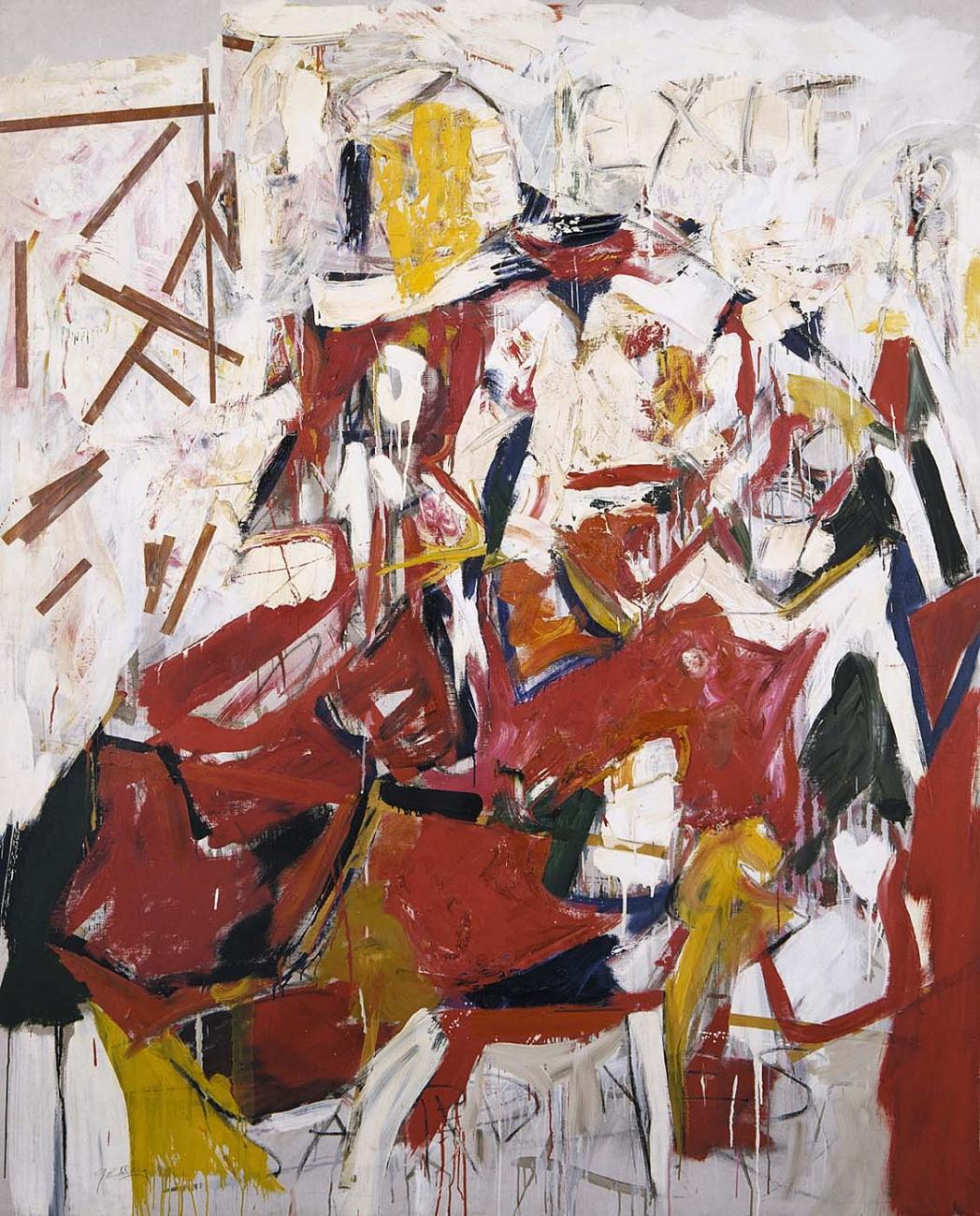
"I am not a painter, I am a poet," begins Frank O'Hara's poem, Why I Am Not a Painter written in 1957. He continues, "Why? I think I would rather be/ a painter, but I am not. Well,/for instance, Mike Goldberg/is starting a painting. I drop in."
And so we're let into the world of poet meets painter, and we all get to drop in for a visit. O'Hara, one of the best poets of the New York School of Poets, wanders into the studio of Michael Goldberg, one of the painters of the New York School of Painters who was one of the youngest member of "The Club" where artists gathered on Eighth Street, Greenwich Village. Goldberg's painting Sardines from 1955 hangs on the third floor of American Art (along with two others Still Life and Landscape, painted a decade later).
O'Hara was involved in the making of different painter's works, many of whom were first or second generation New York School artists. These painters used a whole arsenal of improvisational painting techniques that were new to western art (such as Jackson Pollock's drippings). Improvisation became central to the poetry of O'Hara. Once on the way to a poetry reading he composed a poem on the Staten Island Ferry.
O'Hara was a very generous friend. He was particularly giving to his painter friends, including Goldberg, in looking at their work and responding to it. Joe LeSueur in his invaluable Digressions on Some Poems by Frank O'Hara states that O'Hara offered his painter friends "encouragement, inspired them with his insights and his passion; they impinged upon and entered his poetry, which would not have been the same and probably not as good without them." One can say in turn that the painters he knew and cultivated would not possibly have achieved all they did without O'Hara's enthusiasm and feedback.
O'Hara's poem continues:
"Sit down and have a drink" he
says. I drink; we drink. I look
up. "You have SARDINES in it."
"Yes, it needed something there."
"Oh." I go and the days go by
and I drop in again. The painting
is going on, and I go, and the days
go by. I drop in. The painting is
finished. "Where's SARDINES?"
All that's left is just
letters, "It was too much," Mike says.
And so, from one visit to the next (and to the next) Goldberg has changed his mind about the word Sardines. It's still there, but seems more of a palimpsest than a forceful idea. There is also the word EXIT at the top of the painting, but when did that get added? O'Hara doesn't say. He does continue the poem with a riff on the color orange:
"But me? One day I am thinking of
a color: orange. I write a line
about orange. Pretty soon it is a
whole page of words, not lines.
The poem goes on to talk about writing and the color orange in O'Hara's conversational style, a kind of literary brush stroke. I think O'Hara was a painter; he just had his own kind of palette. The poem ends with the following lines:
"My poem
is finished and I haven't mentioned
orange yet. It's twelve poems, I call
it ORANGES. And one day in a gallery
I see Mike's painting, called SARDINES."
So, the Sardines returned and were important enough to give the painting its name. We have the painting and we have the poem, together forming a conversation about poetry and painting and we're lucky enough to have been allowed to listen in.
Frank O'Hara was also good friends with painter Grace Hartigan. Her painting Frank O'Hara (1926-1966), which was created the year O'Hara died in an accident on Fire Island, is also in SAAM's collection.
This blog post was originally published on August 30, 2012.


















